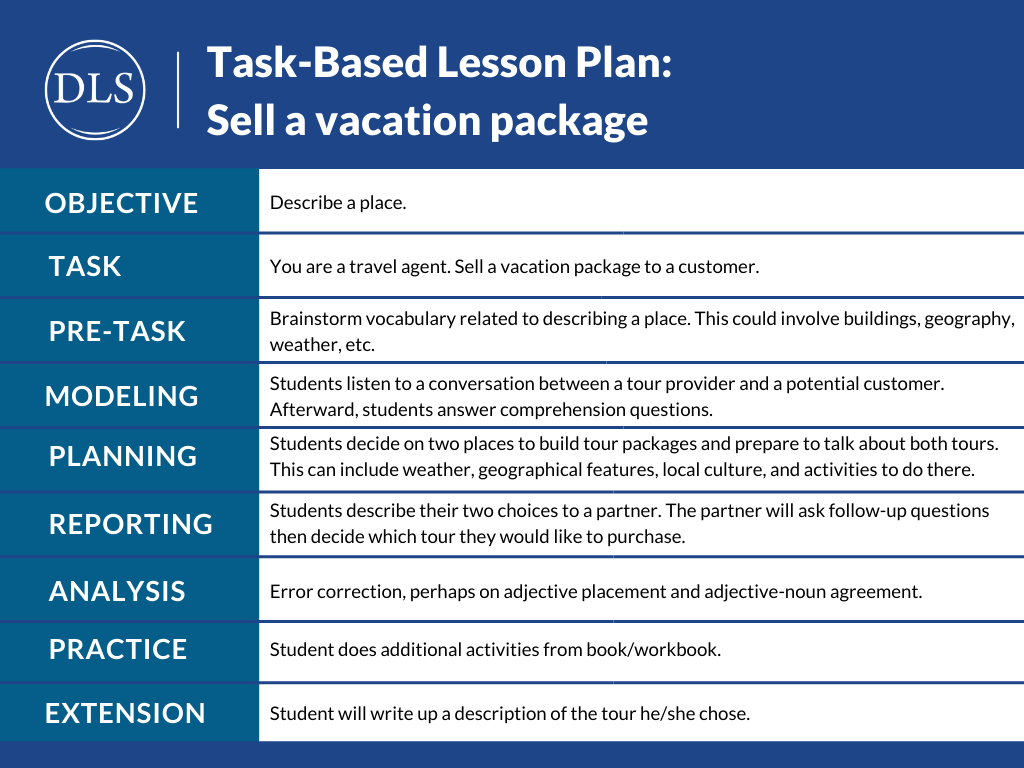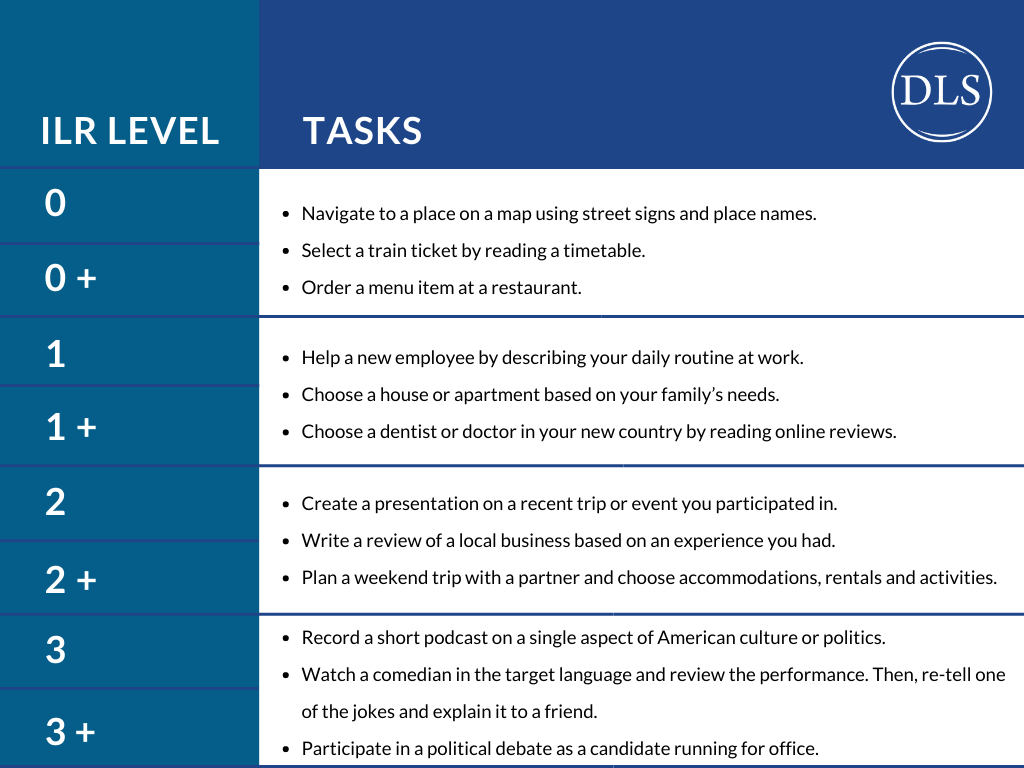In our last blog post, we covered how DLS measures student’s progress on the Interagency Language Roundtable (ILR) scale. We also shared specifics on the various ILR levels plus what students should be able to do in terms of reading, writing, listening, and speaking in their target language.
You didn’t think we’d leave you hanging, did you? Now, enjoy part two, where we’ll discuss task-based instruction for foreign language proficiency.
Teaching Proficiency through Task-Based Instruction
Proficiency measures what a student can do in the target language. So, if we measure proficiency by the student’s ability to handle real-world situations, then it should be taught through real-world tasks. That’s where task-based instruction comes in. In task-based instruction, each lesson focuses on completing a task, and students can use the language however they like in order to complete it. Tasks must push students to use the language as a tool to accomplish a goal. Below is an example of a task-based lesson plan. How is this different from a typical lesson plan?


Selecting Tasks by ILR Level
Look below at the table of tasks for students to complete at different ILR levels. Notice how tasks evolve as students become more proficient in the language: From levels 0+ to 1+, students go from using memorized words and phrases to producing full sentences and simple descriptions. By level 2, students are describing events in the present, past, and future while also expressing simple opinions. At level 3, students discuss complex ideas and even use them in persuasion.


Keys/Tips for Proficiency-Based Instruction
- All instruction should be communicative – even grammar. In a communicative, task-based class, students should learn grammar in an authentic context of meaningful communication.
- Classes must be student-centered. This means that student speaking time should dominate the class periods while putting emphasis on language use, interaction, and production.
- Detailed preparation is required on the part of the teacher to ensure that instructions are clear and students always know what they’re supposed to be working toward. Students need to work toward their goal incrementally in a way that exposes them to authentic new language and allows for ample practice before attempting the task.
- Since task-based instruction is meant to produce successful interaction in real-world scenarios, authentic materials should introduce new language – i.e. materials made by native speakers of the target language and intended for native speakers of the target language.
Additional Resources
The ACTFL website is a great resource for instructors to learn more about communicative and task-based instruction. You can read more about performance descriptors of proficiency levels here and access resources for teaching and learning remotely here.
For more DLS, check out other blogs and visit us on Facebook, LinkedIn, Instagram, or Twitter!
By Clayton Crockett




